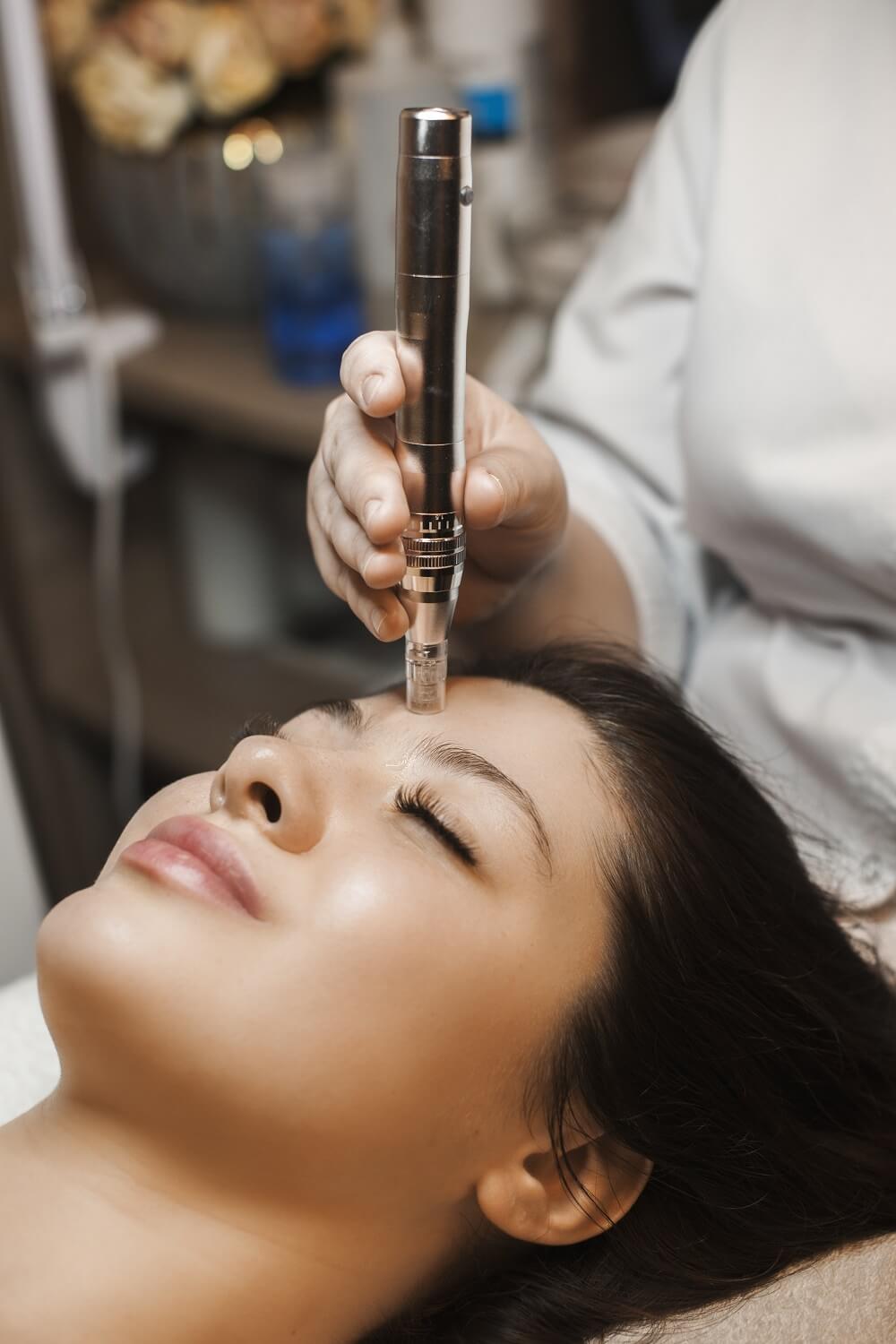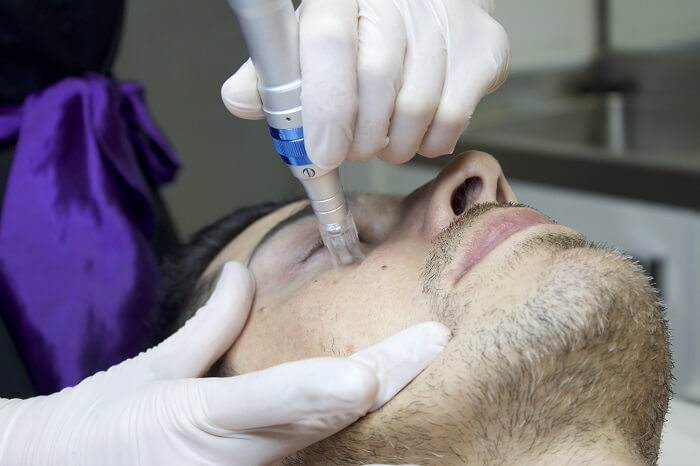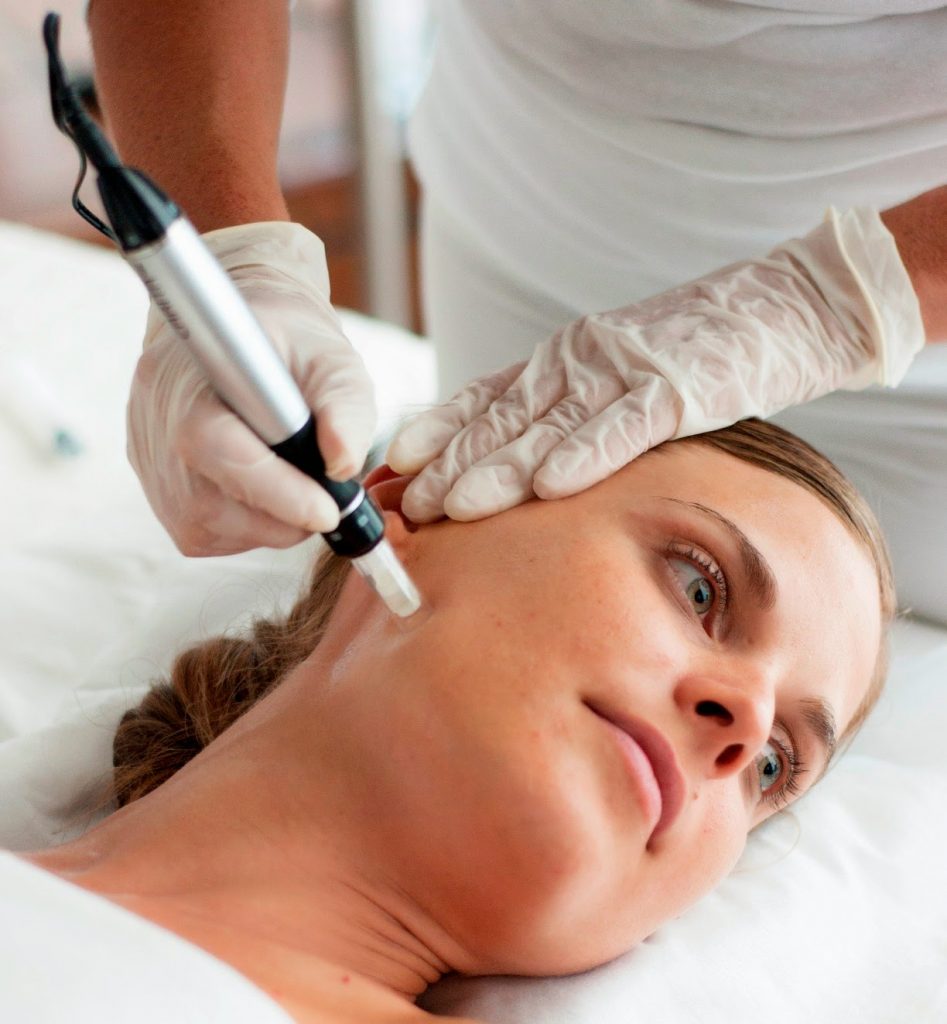Microneedling from U.S. Dermatology Partners
What are the Benefits and Side Effects of Microneedling?
We all want our skin to be smooth, flawless, and firm, but aging, sun exposure, acne, chronic skin conditions, and other issues can lead to rough, uneven skin tone and texture. Many people think that invasive cosmetic procedures or surgeries are the only options to improve the skin, but microneedling offers a minimally invasive solution to promote collagen production and healthy skin growth for a smoother and more youthful appearance. At U.S. Dermatology Partners, our dermatologists offer microneedling to help individuals look and feel their best without the need for more invasive procedures. When you’re ready to get started, contact the U.S. Dermatology Partners location near you to schedule your cosmetic dermatology consultation. We look forward to hearing from you.
Find This Service Near You
What Is Microneedling?

Microneedling is most commonly used on the face, but this procedure can be effectively applied to other parts of the body, especially when combined with cosmetic options like dermal fillers, to reduce the appearance of noticeable imperfections like:
- Scars (including acne scars)
- Wrinkles
- Stretch marks
- Large pores
- Sun spots (or age spots)
- Eyelid sagging or bags
- Lax skin
- Uneven skin tone or texture
- Melasma
Who Is a Good Candidate for Microneedling?

However, doctors discourage having the procedure done when:
- Any infections are active or present in the body
- There are open wounds, especially in the treatment area
- Taking certain medications (including Accutane – isotretinoin – for acne)
- Receiving radiation therapy or have recently undergone this treatment
- Pregnant, breastfeeding, or actively trying to become pregnant
- The individual or close family members have a history of abnormal scarring (like keloids and hyperpigmentation)
The ideal candidate for microneedling is anyone who is concerned with the appearance of their skin. These patients may have tried other at-home procedures, like chemical peels, without seeing the desired result, and in some cases, patients are seriously considering surgical intervention.
Compared to similar cosmetic dermatology treatments, microneedling offers numerous benefits, including:
- A Minimally invasive procedure that is comfortable with little to no numbing or sedation
- Quick healing time with minimal side effects and no downtime
- The procedure itself can easily be completed over a lunch break
- Improves the appearance of numerous types of imperfections and delivers generally brighter, smoother, healthier skin
- Microneedling is effective for all skin types and skin colors
- Gentle treatment is safe for use on sensitive skin (eyelids, scalp, backs of the hand, etc.)
How Does Microneedling Work?
Microneedling can be completed in about an hour at our office from check-in to check-out. We’ll begin by applying an anesthetic cream to your skin. Then, your practitioner will use a special microneedling device to create tiny perforations in your skin’s surface. The dermatologist moves the microneedling device evenly across the treatment area to ensure consistent results.
The procedure itself usually takes 15-30 minutes, depending on the size of the treated area. During microneedling, patients describe the sensation as similar to sandpaper being moved across the skin, but because the treatment is short in duration and we use topical numbing, any discomfort is easily managed. For individuals who have sensitive skin or easily irritated skin, the dermatologist may apply a calming facial treatment following your procedure to soothe the skin and promote healing.
Many patients notice an immediate glow to their skin even though there may be some initial redness or puffiness in the treated area. For most, visible changes to the skin develop over the course of several weeks. Patients may continue to see improvement for up to six months after the treatment as collagen production continues.
Are There Side Effects to Microneedling?
Microneedling has very few side effects, and they are generally short-lived. Immediately after microneedling, the treated area will be reddish in color. On average, patients may have redness for two to four days; however, some patients heal completely in 24 hours. If you have dark skin, you may experience temporary hyperpigmentation. While you may have mild symptoms after microneedling, this is a truly no-downtime treatment. That means you can go back to your regular routine immediately after you visit the office. The only difference is to take special care to limit sun exposure as your skin heals.
Common, mild side effects include:
- Irritation
- Redness
- Sudden appearance of red spots
- Itchiness
- Dryness
- Tightness
In rare cases, you may notice more serious side effects. These warning signs require medical intervention, so please contact your dermatologist if you notice:
- Bleeding
- Bruising
- Peeling
- Swelling
- Infection
How Long Will Microneedling Last?
While you will likely see some improvement after your initial treatment, the ideal results usually involve three to six microneedling sessions over several months. For patients with concerns about deep wrinkles, advanced photo-aging, stretch marks, or acne scars, six to eight monthly sessions are recommended.
After their initial round of microneedling treatments, some patients only require a single session once a year to maintain their results. Your doctor at U.S. Dermatology Partners can tell you more about what sort of individual results to expect, and they will work with you to create a personalized ongoing care plan.
*Results may vary by individual


